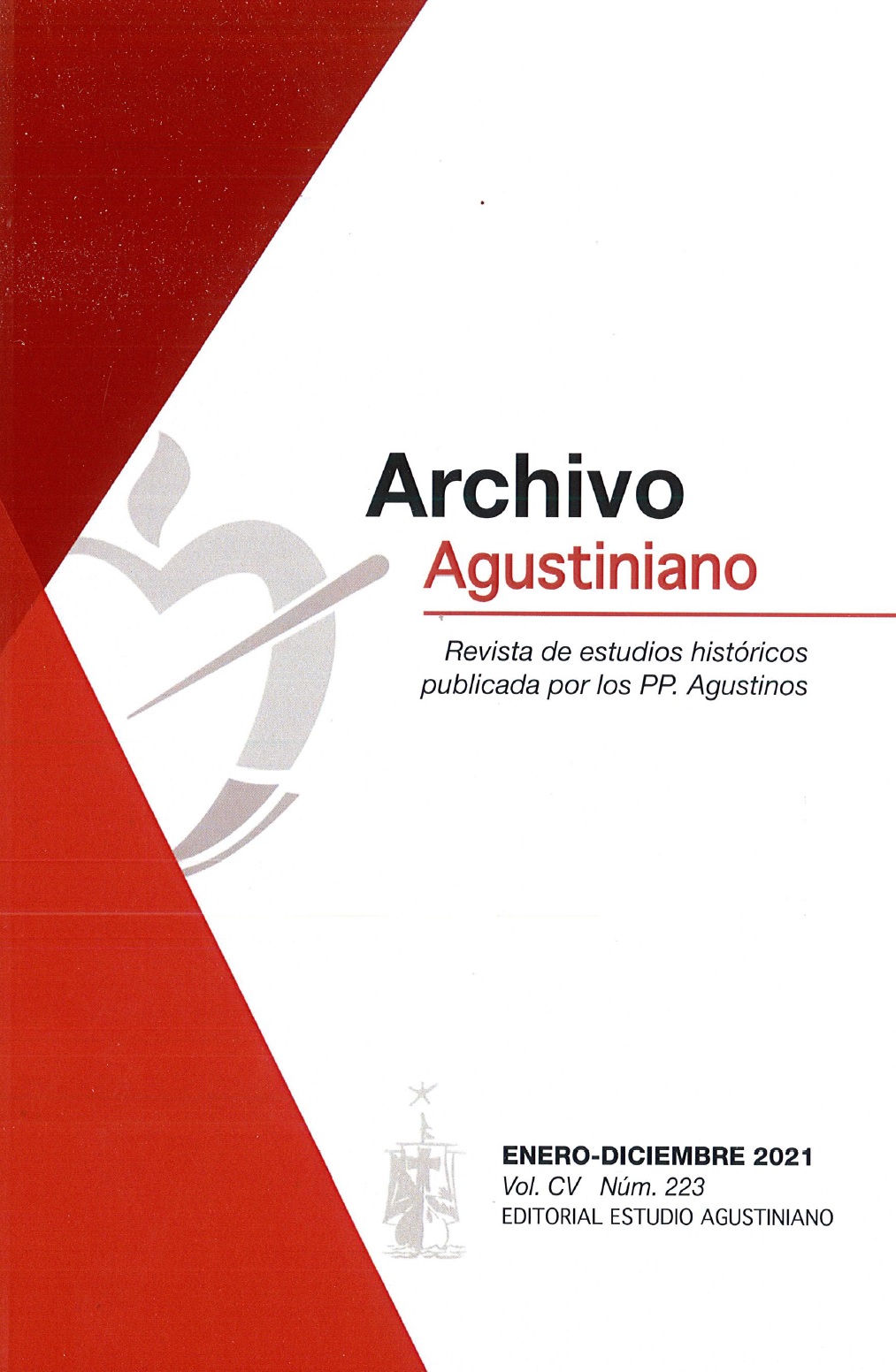Fr. Andrés de Urdaneta y su legado: el Santo Niño de Cebú, el Tornaviaje, el Galeón de Manila, la evangelización de Filipinas
DOI:
https://doi.org/10.53111/aa.v105i223.1072Keywords:
Augustinians, Andres de Urdaneta, Santo Niño, Philippines, Tornaviaje, Manila Galleon, Mission, Evangelization, Augustinian Province of the PhilippinesAbstract
This research is divided in ten chapters related, in one way or other with Andres de Urdaneta. The first one is dedicated to the Expedition of Magellan-Elcano (1519-1522), the first circumnavigation of the World, and the arrival of the Image of Santo Niño de Cebú, given in 1521 to Queen Juana, after she was baptized, and founded 44 year later in 1565 by the Expedition of Legazpi-Urdaneta. In the second is studied the Expedition of Jofre de Loaysa (1525-1536), were the young Urdaneta travel at the service of Juan Sebastian Elcano, the more than eight years of residence in the Molucas Islands, and the turn of the World of Urdaneta when he was 28 years old. The third speaks about the travel of Urdaneta from Spain to Mexico, the years he dedicated to the service of the viceking and how he become friar and join the Augustinian Order (1537-1552). Chapter four is dedicated to study the Expedition of Legazpi-Urdaneta (1564-1565) from Mexico to the Philippines and how the Image of Santo Niño was found in Cebú, and in his honour was built the first church in the Philippines. Chapter five presents the adventure of Tornaviaje, the trip from the Philippines to Acapulco, that has, as a main protagonist fr. Andres de Urdaneta. Next is studied the legacy of Urdaneta. First of all, in chapter six, the history of the Manila Galleon or Acapulco Galleon (1565-1815) that during 250 years was the main link between America and Asia. In chapter seven can be seen the evangelization of those islands carried on mainly by the religious Orders (Augustinians, Franciscans, Jesuits, Dominicans, Augustinian Recollets…) The Christian message promoted aboriginal languages, printing press, education, agriculture and industry, different arts (architecture, sculpture, painting, embroidery…) the sciences and the history. Chapter eight presents other fruits of the Tornaviaje of Urdaneta, like the geographical discoveries, the hispanization of Philippines and how those Islands became the door to China and Japan. Chapter nine shows the devotion of Santo Niño de Cebú as one of the pillars of the national identity of the Philippines and how is present also in Valladolid, in the convent of the Augustinians, from where more than 2.000 missionaries went to work in the evangelization of the Philippines, and in his Museo Oriental. Chapter ten speaks about some of the monuments dedicated to Urdaneta in the Philippines and Spain. In the conclusion is made an elogy of fr. Andres de Urdaneta. The study is completed with 95 colour illustrations related to the text.
Downloads
Published
Issue
Section
License
Copyright (c) 2022 Blas Sierra de la Calle, OSA

This work is licensed under a Creative Commons Attribution-NonCommercial-NoDerivatives 4.0 International License.

